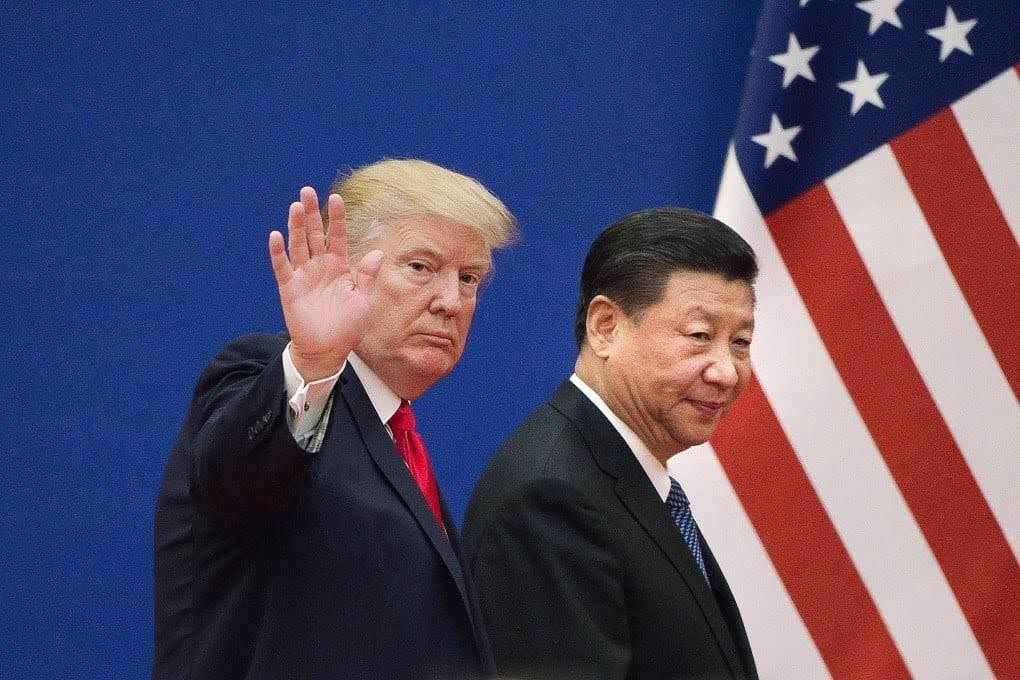Trump Pledges to Sign CLARITY Act, Fast-Tracking U.S. Crypto Rules as China Accelerates

Key Takeaways:
- Trump says he will sign the CLARITY Act to cement a federal crypto market framework and keep the U.S. ahead of China.
- The bill would define digital commodities, give the CFTC primary oversight, and set clear paths to register crypto venues while preserving targeted SEC authority.
- Together with a national stablecoin regime, CLARITY would form a two-pillar policy to scale U.S. crypto without ceding ground to Asia’s rising hubs.
The message is unambiguous: lock in rules, unlock growth. By committing to sign the CLARITY Act, Trump is turning the crypto policy debate into a race for strategic leadership, explicitly naming China as the competitor the U.S. must stay ahead of.

What the CLARITY Act Actually Does
At its core, the CLARITY Act is a market-structure blueprint designed to end years of ambiguity that pushed activity offshore.
- Defines “digital commodities.” Assets that function like commodities would fall primarily under the CFTC, giving spot markets a clear federal cop on the beat.
- Leaves the SEC in play where it matters. Capital-raising that looks like securities still triggers SEC disclosures and anti-fraud protections. The bill aims to stop “regulation by lawsuit” without weakening investor safeguards.
- Creates fit-for-purpose registrations. Exchanges, brokers, and custodians get tailored compliance lanes instead of retrofitting equity-market rules to blockchain rails.
- Codifies market integrity. Surveillance, custody, conflicts, and listing standards are spelled out for digital assets, reducing guesswork for compliance teams and banks.
- Protects consumer choice and privacy. The package includes guardrails around a U.S. CBDC and reporting requirements, reflecting bipartisan concerns over financial surveillance.
A settled rulebook lowers legal risk, encourages banks and asset managers to participate, and widens on-shore liquidity. It also shortens time-to-market for new products because teams can build to a known specification instead of reading tea leaves from court filings.
Read More: U.S. House Set to Scrutinize Key Crypto Bill, the CLARITY Act
Why the China Angle Is Front and Center
The pledge of Trump connects the crypto policy to competition in technology. The message is not complex, when the U.S. blink, others strike first. Although mainland China is a narrow zone in terms of personal crypto trading, the wider China region especially Hong Kong have been aggressive in attracting exchanges, issuers, and developers. The change is significant to order-book depth, stablecoin rails and future ETF flows.
CLARITY will be the antithesis: as opposed to attempting to boil down activity, Washington would instead direct it into licensed places, audited reserves and open disclosures. Combine that with a federal stablecoin regime, the U.S. has increased the digital presence of the dollar, a strategic goal that brings crypto policy in line with currency competition.
In brief, the White House is positioning crypto not only as a retail speculation issue, but as monetary infrastructure, payments, custody, capital formation and data centers to be located in the U.S. and to be secured.
Read More: China Set to Shake Crypto Markets with First-Ever Yuan Stablecoin Plan Amid Dollar Dominance

Status Check: From Campaign Line to Statute
- House passage: The bill gained bipartisan momentum in the House, reflecting frustration with whipsaw enforcement and a desire for clear jurisdictional lines.
- Senate path: The Senate Banking Committee now holds the pen. Expect negotiation on consumer-protection language, exchange obligations, and how far to go on anti-CBDC provisions.
- Presidential posture: The commitment to sign is public and deliberate. It pairs with support for a national approach to stablecoins so dollar-backed tokens remain anchored to U.S. standards, not foreign regimes.
For markets, the key is not the press release, it’s the sequencing. Stablecoins provide the payments rail; CLARITY supplies venue rules and token pathways. Pass both, and the U.S. gets a cohesive framework instead of patchwork guidance and courtroom precedent.
What Changes for Crypto if CLARITY Becomes Law
Cleaner listings and deeper books. With federal registrations and surveillance expectations defined, compliant venues can list faster and coordinate cross-venue monitoring. That typically tightens spreads and improves price discovery for large-cap assets while giving mid-caps a clearer route to graduation.
Real on-ramps for new tokens. A disclosure-first path to initial distribution replaces guesswork. Projects get a documented runway to evolve into non-securities if they meet functional and decentralization criteria, reducing the risk of after-the-fact reclassification.
Banks and pensions can participate. Explicit custody, capital, and risk standards unlock mandates that currently sit on the sidelines because counsel can’t map rules to crypto with confidence. Expect more segregated custody, stronger attestation regimes, and a gradual broadening of approved counterparties.
The post Trump Pledges to Sign CLARITY Act, Fast-Tracking U.S. Crypto Rules as China Accelerates appeared first on CryptoNinjas.
